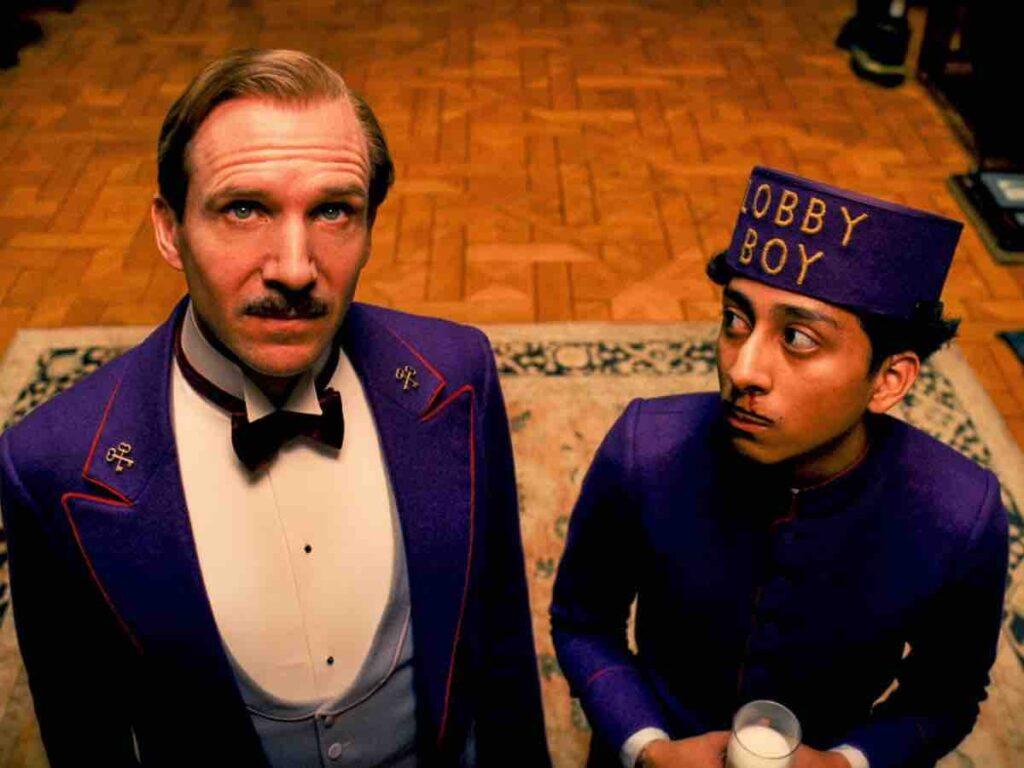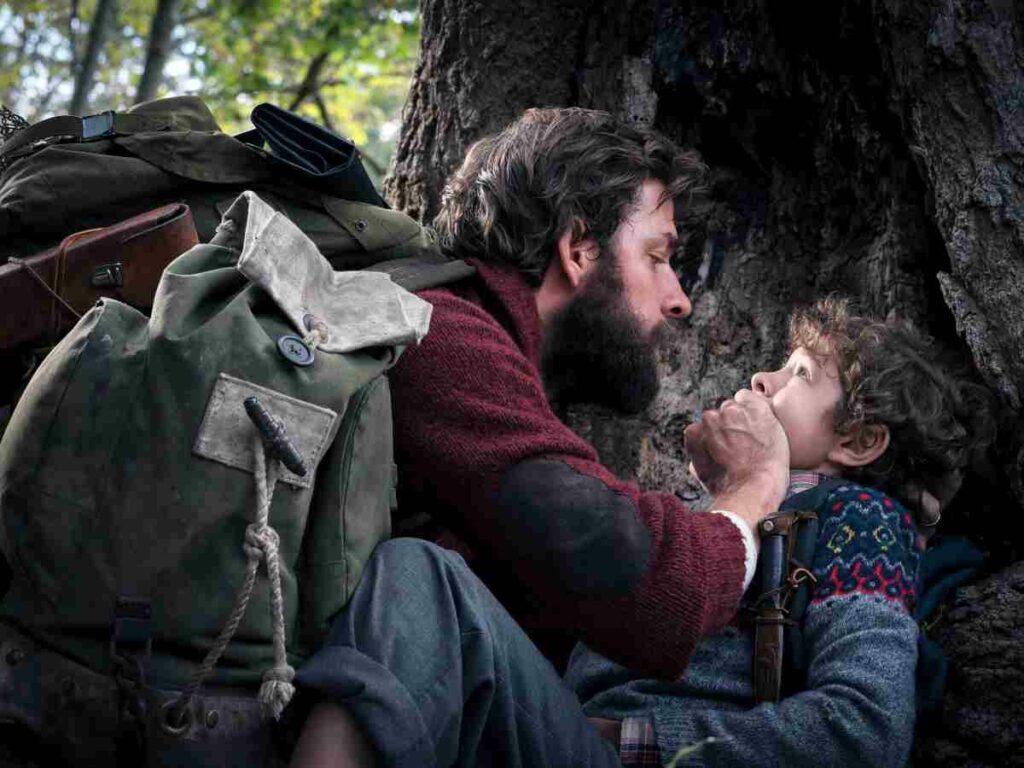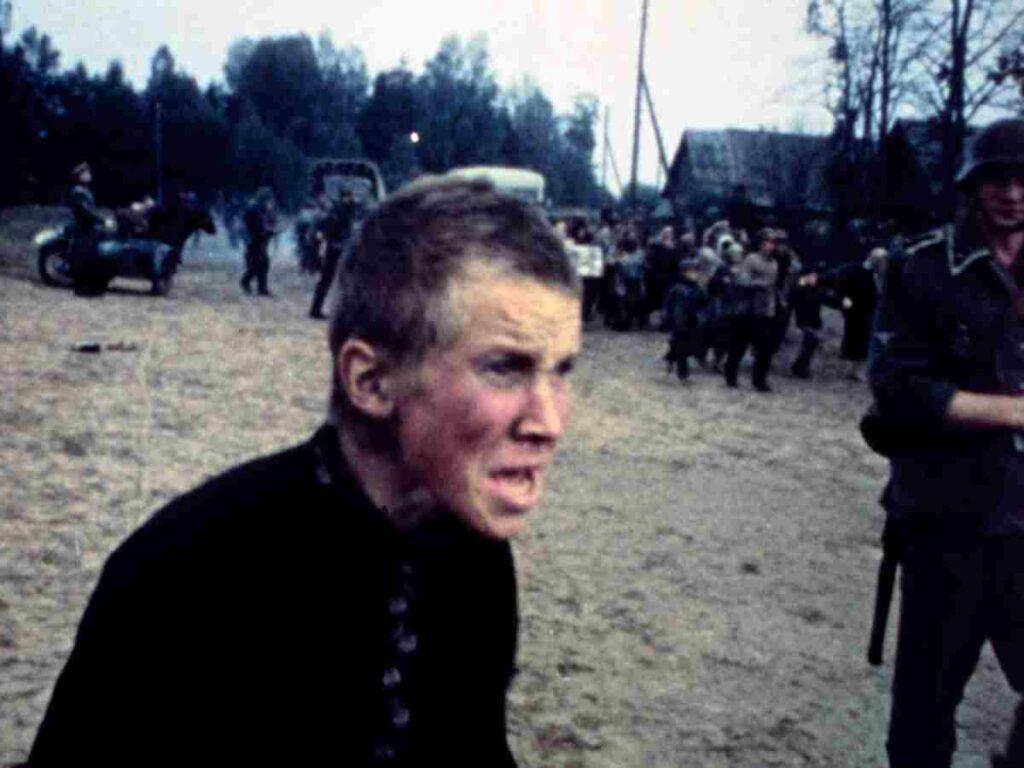From The Life Aquatic with Steve Zissou (2004) to The Grand Budapest Hotel (2014), here are all Wes Anderson films ranked.
Whimsical, colorful and immersive — a Wes Anderson film is a genre all its own. He is often hailed as a key figure in American Eccentric Cinema, which is characterized by a preoccupation with individuality, irony, alienation, and breakdown of the family structure. Developing under the burgeoning influence of the New Hollywood movement, American Eccentric cinema ushered in a new era of experimental and indie filmmaking that sported singular and deeply quirky characters. Some proponents of this style of filmmaking, like Spike Lee, Charles Stuart Kaufman and Anderson himself, are referred to as The American Eccentrics.
Wes Anderson made his debut as a director with the movie Bottle Rocket, which he wrote with his then-roommate at college, Owen Wilson. The duo would later go on to collaborate on many of Anderson’s movies, including The Royal Tenenbaums and The Darjeeling Limited. Anderson’s work often features appearances from a familiar cast of actors, and contains the common themes of family, coming-of-age, and the search for identity. Critics have held up his impeccably polished and curated vision as a prime example of a modern-day auteur. As it is, ranking such a distinctive body of work is an uphill task, and every admirer is predisposed to their own preferences. Quickly then, here are all Wes Anderson movies ranked, from worst to best.
Wes Anderson Movies, Ranked
10. The Life Aquatic with Steve Zissou (2004)

A Wes Anderson offering will often have Bill Murray starring as a discontent, somewhat emotionally immature man-child. In The Life Aquatic with Steve Zissou, he plays the titular character who’s coping with the loss of Esteban, his partner. He sets out to exact revenge from the shark who ate Esteban, and in doing so, he is thrown together with an odd bunch of characters. Viewers new to Anderson’s world of playfulness and whimsy will find this movie occasionally jarring in its harebrained plot. Nonetheless, it is utterly charming, and what it lacks in an engrossing plot, it makes up for with a cast of lovable characters, featuring Owen Wilson, Cate Blanchett, Willem Dafoe.
The climax falls a little flat, lacking the trademark irony that have come to define finer Anderson flicks. Nor does one feel at home with the milieu he conjures up in the film, which is such a shame, as these characters are so finely drawn. Yet, the film is an admirable tale of a man trying to cope with loss, and leaves you with a bittersweet sense of nostalgia. Overcoming its shaky origins, it has been reappraised as a cult hit.
9. The Darjeeling Limited (2007)

Many of Anderson films have to do with the aftermath of the breakdown of familial structures. And The Darjeeling Limited is perhaps the best example out of all his works. Three brothers who have drifted apart are brought together by their father’s death. When they take a trip across India to rediscover their relationship, old wounds and resentments come to the surface. I’ve always found this one of Anderson’s most moving narratives. While it has the standard symmetries and idiosyncrasies one associates with his work, the setting is stripped down in a way Anderson rarely allows.
Doing so allows the pathos of loss, nostalgia and love to be fully communicated to the viewer, and this is where the story finds itself the strongest. Adrien Brody, Jason Shwartzman and Owen Wilson are incredibly believable as the trio of brothers, moving from hilarious to sullen and sincere at a moment’s notice. My only grouse with this movie, really, is that it lacks a certain sense of vibrancy. Much of the film is set across India, and while the emotional heft of the story takes center stage, the possibilities of an interesting background in a land so removed from suburban USA are left unexplored.
8. Bottle Rocket (1996)

Anderson adapted his first feature film, Bottle Rocket, from his previous short film of the same name that he wrote with brothers Luke and Owen Wilson. The story revolves around two friends, Anthony and Dignan. When Dignan rescues his friend from a psychiatric ward, they come up with a plan to commit several robberies and sell their loot to a part-time landscaper. While the film didn’t do very well at the time of its release, it drew critical attention that eventually launched Anderson as a filmmaker with a singular vision.
The story lags in certain places, and the third act is rather chaotic. However, it is a great film to learn and note early influences from if you are an admirer of Anderson’s oeuvre. Many of his stylistic approaches like his propensity for the caper genre, and the usage of snap zooms, found fertile ground in his first major project. With a sense of humor that often borders on slapstick comedy, Bottle Rocket is a fascinating look into the early days of Anderson’s now-iconic style.
7. Isle of Dogs (2018)

One of the most visually sumptuous animated dog movies in recent years, Isle of Dogs is a sheer joy to look at. Through painstakingly carved puppets that took over three months to create, and stop motion animation, the film tells the story of Atari Kobayashi, a young boy looking for his dog. It is set in a vaguely futuristic Japan, where all the dogs have been banished to an island after being infected with an epidemic.
Anderson was hugely influenced by the films of Hayao Miyazaki, as well as the stop motion animations from Rankin/Bass Productions. To create an authentic representation of Japanese culture and architecture, he looked towards the architecture of Japanese buildings by Frank Llyod Wright. His signature style of staged, off-beat backgrounds also came in handy to design a futuristic, vaguely dystopian vision of Japan. Set designs from Japanese cinema, such as Yasujiro Ozu’s Late Spring or Tokyo Story were also a prominent influence. While the story is heartwarming and wholesome, the visuals alone are reason enough to watch. You won’t be disappointed.
6. The Royal Tenenbaums (2001)

Anderson’s fondness for depicting dysfunctional families finds a wonderful medium in The Royal Tenenbaums. Siblings Chas, Margo and Richie are brought back together in their mother’s home when their absentee father reveals that he is dying. However, there is more to the story. While the siblings reunite in grief, they are keeping secrets from each other as well. The starting point for the story of the film was reportedly the divorce of his own parents from his childhood, and Anderson treats the subject matter with a rare brevity.
As one of the films made during Anderson’s early formative phase, the story is rife with many archetypal characters that typically appear in his films. Gwyneth Paltrow’s performance as the cold and aloof Margo is utterly beguiling. And who can forget the iconic sequence of her making her entry in her signature fur coat, while These Days by Nico plays in the background. The Royal Tenenbaums truly represents the moment of Anderson’s artistic coming-of-age.
5. Moonrise Kingdom (2012)

One of my favorite coming-of-age narratives, Moonrise Kingdom explores the burgeoning love between youngsters Sam and Suzie. Each eccentric in their own way. The former is a runaway Khaki Scout who cannot seem to find a foster home, and the latter finds existence in her town stifling. Through their escapades, Anderson paints a tender picture of young love and infatuation. Precocious children are usually something of a commonality when it comes to Wes Anderson’s work, but Sam and Suzie stand out. Their characters are written with a dignity and depth of feeling that fiction rarely grants to its young protagonists.
For me, the best part of the film was its sense of character. Every single persona, no matter how minor, is invested with a rich backstory. It’s hard to not care about them. Bruce Willis as the awkward yet loving police captain Duffy Sharp is a surprising revelation. The arc of his relationship with Sam as a guardian is bound to leave you teary-eyed.
4. The French Dispatch (2021)

A love-letter to artists across forms and genres, The French Dispatch is a loose collection of three unrelated stories that appear in the last issue of the eponymous magazine. Set in the fictional French town of Ennui sur Blasé, Anderson originally conceived of the project as a homage to The New Yorker in its glory days. Several characters are loosely inspired from literary figures. The three stories all display classic Anderson elements. An eccentric artist, a student revolutionary and a legendary chef are the protagonists of these tales. The second story, Revisions to A Manifesto, stands out. While the rest of his sprawling cast perform impeccably, Timothee Chalamet as Zeffirelli, a student revolutionary is especially enjoyable.
I would consider The French Dispatch as one of his most experimental works, perhaps. In its clear distillation of character-driven narratives, the film eschews traditional storytelling methods in favor of a frame-within-a-frame story, nudging and winking to the audience all the while. Here is a filmmaker firmly in control of his craft.
3. Fantastic Mr. Fox (2009)

Fantastic Mr. Fox is a light-hearted, down-to-earth caper that follows the titular Mr. Fox as he tries to steal food from farmers to feed his family. Of course, things don’t go quite as planned, and he ends up on the run from the law. This isn’t quite a film that will blow you away in terms of action or suspense but it does have its heartwarming moments. Anderson’s unique visual style is on full display, and the film features an all-star voice cast including George Clooney, Meryl Streep, and Bill Murray.
With an almost childlike sense of whimsy and wonder, this is one of the few films from Anderson that explore the positive effects of community upon the individual. Sure, the characters are all eccentric and neurotic, as befits a film from the auteur-director. But that sense of fantastical individuality is grounded with a camaraderie that is uplifting, for lack of a better word. This is a film you will definitely want to watch with your family.
2. Rushmore (1998)

In only his second film, Anderson already displays an artistic maturity that would have confounded lesser artists. In Rushmore, he creates a funny and insightful narrative of an emotionally troubled genius, Max Fischer. While he is brilliant and participates in extracurriculars, Max struggles academically. When he meets Herman Blume, a cynical parent and businessman, the two form an unlikely friendship, which is only threatened by their shared love for Rosemary, a teacher.
Mentor-protege, or father-son relationships have long been a staple of Anderson’s films. Rushmore is no different. Bill Murray and Jason Shwartzman lend credibility to their performances as Herman and Max respectively, and the film really does revolve around how they help each other grow out of their disaffectedness. Many critics have also approached it as a semi-autobiographical narrativization of Anderson’s life, calling attention to the protagonist’s eccentricity and his affinity for writing school plays. The film was also shot at Anderson’s alma mater, St John’s School, in Texas.
1. The Grand Budapest Hotel (2014)

Pastel hued sets, a quaint, if fictional, location and peculiar characters — The Grand Budapest Hotel is as Anderson a film as it gets. Recounting the story of M. Gustave and his acolyte, Zero, it is set in Zubrowka, a fictional Eastern European country. When Gustave’s wealthy patroness dies and bequeaths him an invaluable painting, it sets a target on his back. As World War II rages on, Gustave and Zero meet a host of fascinating characters who are after the painting. It is perhaps one of Anderson’s most sprawling, yet fast-paced comedies. As Gustave and Zero travel and evade Nazis, the immaculate set design of the film is on full display.
Ralph Fiennes leaves no stone unturned in his portrayal of the charismatic concierge. He is, by turns, moody, snobbish, confident and brilliantly foppish. While the characters are richly described and often border on bizarre, they are never treated as mockeries. In fact, the film finds its emotional center in the mentor-protege relationship between Fiennes’ Gustave and Tony Revolori’s Zero. For all the heisting and escaping that takes place, the film really is a nostalgic story about two men out of time and their place in a changing world. The Grand Budapest Hotel earned Anderson and team a whopping 9 Oscar nominations.
Conclusion
A Wes Anderson movie can often feel like a blast from the past. Truly, in their carefully arranged frames, with vintage knick knacks and love for symmetry, they belie a longing for a bygone era. Rife with nostalgia, perhaps that is why these films stay with you long after the end. Critics have often held up the total creative immersion of his work as proof of his auteur status. If anything, his films are living proof of how important it is to have a distinct visual style and storytelling method.
However, it is his attention to detail that sets him apart. In each of his characters and stories, there lies an integral part of Anderson’s personal history, crafted with such love and care that they demand total immersion from the viewer. I cannot recommend his films highly enough to film students, artists and cinema lovers alike. In their preoccupation with the ethereal, the ever-changing and the transitory nature of life, there is something for each of us to learn.




